How to properly care for croton at home?
Favorite plants of flower growers are considered not only those that constantly bloom, but also with beautiful decorative leaves. Among these are croton, or codiaum, characterized by a variety of leaf shapes, their colors. But it is also necessary to take care of an exotic plant regularly, with knowledge of the rules.
Decorative types of croton will decorate halls, offices. This representative of the Euphorbia family, although capricious, will add originality to any room, revive the most ordinary-looking interior.
Content:
- Biological features of croton
- Soil and container for ornamental shrubs
- Lighting, humidity and temperature for the plant
- Organization of watering and feeding
- When and how to transplant Croton?
- Diseases and pests
- The consequences of improper care
Biological features of croton
In the wild, trees higher than three meters are found in the humid forests of Southeast Asia and Oceania. Indoors, the view is represented by variegated codiaum. The houseplant looks like a palm tree with a lignified stem and leaves located in the upper part of the crown. In shape, the leaf blades are rounded or oblong.
Croton is beautiful, but it also requires proper care.
There are varieties with an unusual leaf shape, intricately carved. Leathery coarse leaves are colored in different colors. Young ones are green or slightly yellowish, but over time they change color, becoming covered with spots and stripes of pink, orange and red saturated tones. But the flowers of croton are inconspicuous, pale, collected in carpal axillary inflorescences. They are cut off so that the tree does not waste energy and food on them.
The milky sap of the plant is poisonous, therefore, when cutting the stems and leaves, they wear rubber gloves on their hands. They try to take care of the bush so that the juice does not get into the gastrointestinal tract, on the mucous membranes of the eyes and nose.
Soil and container for ornamental shrubs
Evergreen perennial prefers loose soil. To make the purchased substrate permeable to moisture and air, small pieces of charcoal are added to it. Without a drainage layer, the roots of the plant will start to rot. Expanded clay or small pebbles are placed on the bottom of the pot. They must be at least three centimeters thick.
If the soil mixture is prepared independently, then they take in equal quantities sod land, humus and peat.
The sand is added so that it makes up a tenth of the substrate. For the soil, boiling water is needed. Many people use freezing the soil in the refrigerator or roasting it in the oven. Both procedures are appropriate, as they will help to kill pathogenic microorganisms that are preserved in the soil. After the procedures, the soil must be kept for a week or two to saturate with beneficial bacteria.
The container for planting croton should be reasonably wide. The depth of the container is selected taking into account that the roots of the plant do not come into contact with the drainage layer. Having prepared the container and soil for the young croton, it is transplanted in spring or summer, when the plant does not bloom.
Lighting, humidity and temperature for the plant
Codiaum is a thermophilic shrub. And the conditions for it are created corresponding:
- Croton needs a lot of light. In winter, sunny places are chosen for the premises. And in summer, you can put on the windowsills from the east or west side. The plant will not withstand direct hot rays. Burns will appear on the leaves. And with a lack of lighting, the color of the plate will become paler, beautiful patterns will disappear.
- The dry air of the room will not like the tree. The more moisture in the air and soil, the better. You should not place the croton pot near the radiators. Humidify the air in the room with the help of special devices, placed containers with water. Water is poured into the pallet daily or wet moss, pebbles are placed. Once a week, you can spray the leaves of the bush with water. And the dust on the sheet plates is removed with a damp cloth in order to allow them to breathe freely.
- Temperature conditions play a key role in plant care. If in winter the air temperature can drop to 16 degrees Celsius, then in summer it is comfortable at 20-25 degrees. But the codiaeum does not tolerate temperature changes. You cannot expose it to drafts, transfer it to a garden or loggia, even in summer.
In order for the croton leaves to be always bright and colorful, and the tree to grow, it is necessary to provide good conditions for the plant.
Organization of watering and feeding
Croton is known to be moisture-loving, therefore watering the trees are carried out regularly. Especially often the soil is moistened in summer. Every morning or evening, up to a liter or two of warm, settled water is poured under the tree. If the soil is waterlogged, then they take a break from watering for a while. The soil should dry to a depth of one centimeter. In winter, the frequency of the procedure is reduced. It is enough to moisten the ground every three days.
Only careful care will make it possible for Croton to develop correctly.
The leaves of the plant look bright when sprayed or showering for the tree. At the same time, the soil is covered with a film to avoid flooding it with water. During the growing season, plants are supplied with nutritious fertilizers once a week. To do this, pour over the prepared solution after moistening the soil. In winter, it is enough to feed the decorative culture once a month.
From the rules for caring for croton, you can single out the pinching of the plant. It is needed in order to give the tree the appropriate shape. Pinch the side shoots, removing old branches.
When and how to transplant Croton?
Plant transplantation requires certain skills from the grower:
- The procedure is carried out in summer or spring.
- For transplantation, flowerpots are selected larger in volume than the previous one.
- The previously scalded container is filled with a drainage layer, then nutrient soil is placed on a quarter of the container. It is also disinfected a week before planting.
- Carefully pull out the bush along with root system from an old container. They carefully examine the roots, remove the damaged parts.
- They put a tree in the middle of the flowerpot and sprinkle it with soil, lightly tamping the layer of soil.
- At the end, the transplanted plant is watered, the top layer of soil is poured.
A young croton is transplanted annually, and then as the roots grow back. As soon as the leaves from the codiaum begin to fall off, it means that it is necessary to transplant an ornamental plant.
Diseases and pests
For plants that love tropical conditions, pathogenic fungi are a problem, which multiply faster in a humid environment. Watering with cold water causes anthracnose croton. The leaf plates are covered with grayish or reddish spots. And the fungus spreads along the leaf veins and destroys the plant.
Reduced level soil acidity can lead to root rot. Disease can be detected by drying leaves and their falling off. Croton's roots become flabby, sluggish.Proper care can prevent the occurrence of diseases. Do not flood the trees, use only warm water, not hard. If symptoms of the disease are detected, croton bushes are treated fungicidal preparationslike Fitoverm.
Of the pests, spider mites and scale insects are especially often attacked by an ornamental plant:
- A miniature pest, one millimeter in size, is almost invisible on the leaves. But large colonies of insects on the back of the leaf plate form light spots. With the active spread of the mite, the croton bush is covered with cobwebs. A feature of the life of the pest is the vitality of the eggs laid by the females. And after five years, they can become active, hiding in the ground, cracks in window frames, window sills. To destroy the pest, the tree is washed under the shower. And the leaves on both sides are wiped with a damp soft cloth. From folk remedies to combat the parasite, an infusion of garlic, calendula flowers is used. Stronger drugs such as Intavir are used for advanced cases of infection. Processing is carried out at least three times with an interval of ten days.
- The scabbard belongs to the representatives of the hemiptera insects. They feed on plant sap. Croton leaves, when damaged by a scab, become stained, then darken and fall off. Insects cover the stems and leaves with a sweet liquid, causing the plant to become infected with a sooty fungus. For prevention, it is necessary to wash the croton bushes with an infusion of laundry soap once every two weeks. The soil is disinfected with a solution of potassium permanganate. They get rid of scale insects by collecting them by hand. The pest rarely dies from insecticidal preparations... Only broad-based agents are effective, like Confidor, Aktara.
Diseases and pests appear on weak and diseased plants left without proper care.
The consequences of improper care
Croton is sensitive to the wrong living conditions, so he immediately shows with his appearance that he is feeling bad:
- Decrease in humidity in the room, sudden changes in temperature cause foliage to fall off.
- Since the codiaum loves moisture, when the clod of earth in the pot dries out, the leaves will droop, become lethargic. But a similar situation arises when they are too zealous with watering, and there is a continuous swamp in the pot. In the latter case, an urgent plant transplant is needed.
- The lack of illumination will be indicated by the pallor of the color of the leaves. And direct sunlight in summer and spring will cause burns - brown spots on the leaf surface.
- Violation of the watering schedule also affects the appearance of the decorative leaves. Their tips dry out, and they themselves sag down.
Proper care is important for Croton. If there are difficulties with it, then the plant will hurt, colorful spots and stripes will disappear. In cases where poor growth conditions are created, the tree dies.
More information can be found in the video:



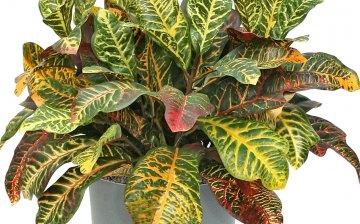

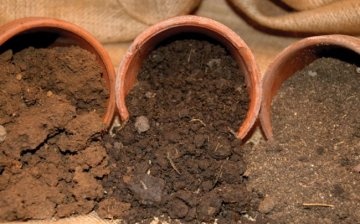
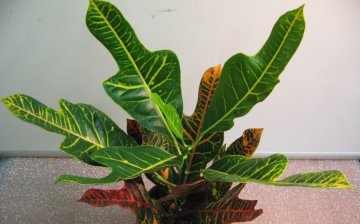
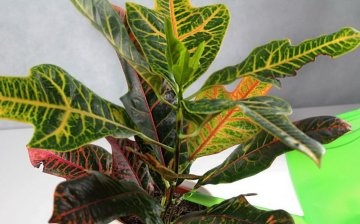
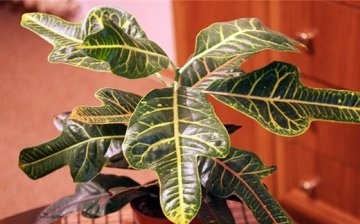
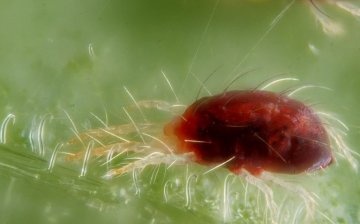
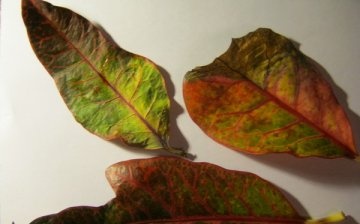








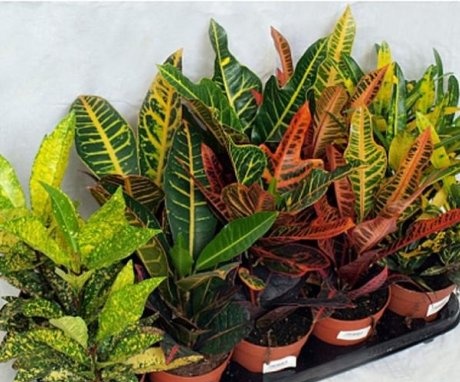
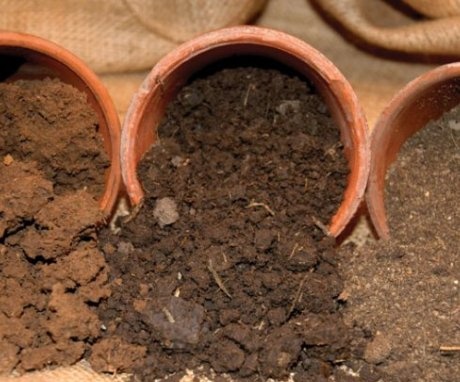
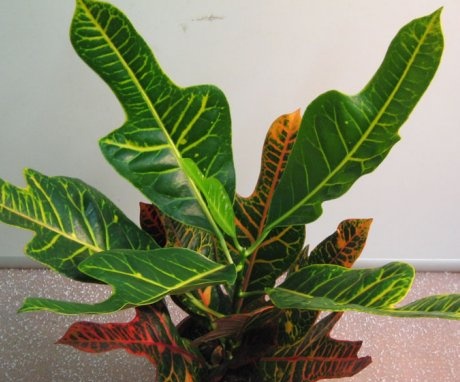
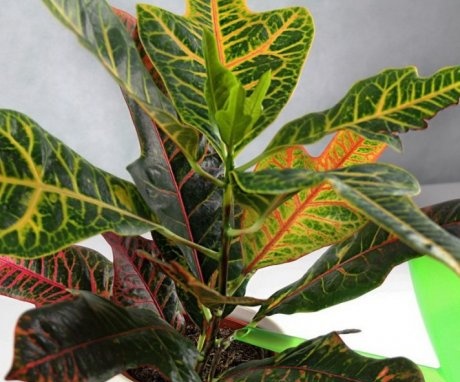
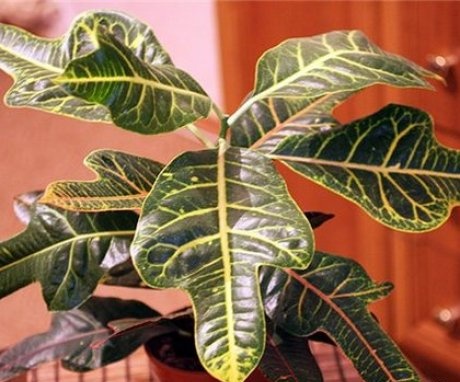
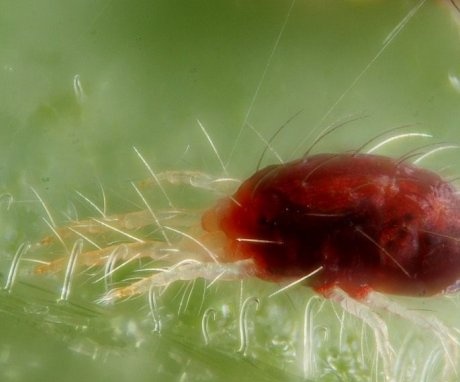

It didn't work out for me with this flower. He is very capricious in leaving. I would say that it will only take root among professionals among indoor flowers. For a beginner like me, this exotic is "too tough".
We also have to take care of Croton at home and, in principle, we can do it. Although the flower is of course finicky. The main thing is proper watering and sometimes fertilizing the soil.